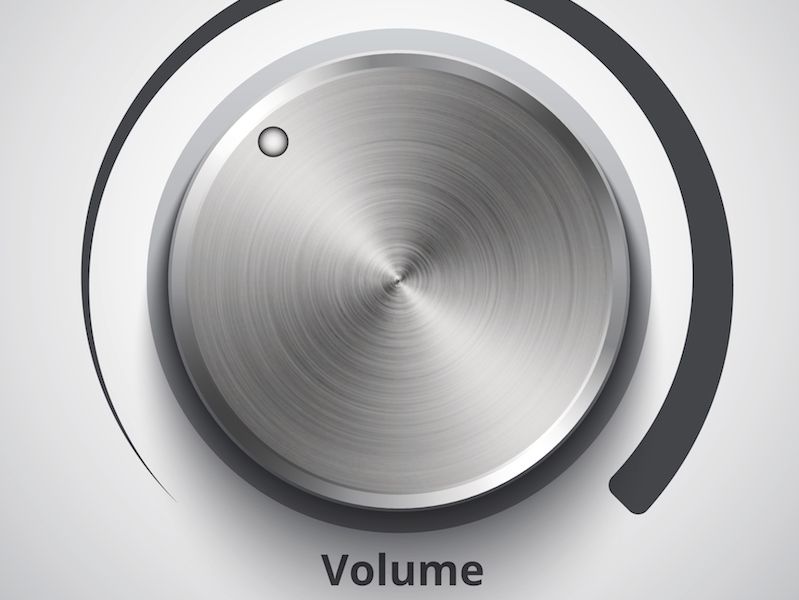
Have you ever seen the “Beware of Sharks” sign when you’re at the ocean? It’s easy to realize that you shouldn’t dismiss a caution like that. A sign like that (especially if written in big, red letters) may even make you reconsider your swim altogether. Inexplicably, though, it’s more challenging for people to pay attention to warnings concerning their hearing in the same way.
Recent studies have found that millions of individuals ignore warning signs when it comes to their hearing (there’s no doubt that this is a global challenge, though this research was exclusively carried out in the United Kingdom). Part of the problem is knowledge. It’s fairly instinctive to be fearful of sharks. But most people don’t have an overt fear of loud sounds. And how do you recognize how loud is too loud?
We’re Surrounded by Dangerously Loud Sounds
It isn’t just the rock concerts or the machine shop floors that present dangers to your ears (not to downplay the hearing hazards of these situations). Many common sounds are potentially harmful. That’s because the duration of sound is as harmful as the volume. Your hearing can be harmed with even low level noises like dense city traffic if you’re exposed to it for more than two hours at a time.
Generally, here’s a rough outline of when loud becomes too loud:
- 30 dB: Normal conversation would be at this sound level. At this level, there won’t be a limit to how long you can safely be exposed.
- 80 – 85 dB: This is the sound level of heavy traffic, a lawnmower, or an air conditioning unit. This volume will usually become damaging after two hours of exposure.
- 90 – 95 dB: A motorcycle is a practical example of this sound level. 50 minutes is enough to be dangerous at this volume.
- 100 dB: An approaching subway train or a mid-sized sporting event are at this sound level (depending on the city, of course). This volume can become dangerous after 15 minutes of exposure.
- 110 dB: Do you ever crank the volume on your earpods up to max? On most smartphones, that’s about this level. This level of exposure will become dangerous after only 5 minutes of exposure.
- 120 dB and over: Anything over 120 dB (think loud rock show or extremely large sporting events) can bring about instant damage and pain in your ears.
What Does 85 dB Sound Like?
Generally speaking, you should regard anything 85 dB or higher as putting your ears in danger. But it can be difficult to know how loud 85 dB is and that’s the problem. It’s not tangible in the way that a shark is tangible.
And that’s one reason why hearing cautions frequently go ignored, when the sound environment isn’t loud enough to cause pain, this is specifically true. Here are a couple of potential solutions:
- Suitable signage and training: This goes for workspaces, in particular. Training and signage can help reinforce the real hazards of hearing loss (and the advantages of hearing protection). Also, just how loud your workplace is, can be made clear by signage. Training can tell employees when hearing protection is necessary or suggested.
- Get an app: Your hearing can’t be immediately protected with an app. But there are several sound level metering apps. Damage to your hearing can happen without you recognizing it because it’s tough to recognize just how loud 85 dB feels. Utilizing this app to keep track of sound levels, then, is the answer. Utilizing this approach will make it more instinctive to distinguish when you are moving into the “danger zone”. (and you will also recognize right away when things are getting too noisy).
When in Doubt: Protect
Apps and signage aren’t a foolproof solution. So take the time to protect your ears if you have any doubt. Noise damage, over a long enough time period, can result in hearing loss. And it’s easier than it ever has been to damage your ears (it’s a simple matter of listening to your music too loudly).
If you’re listening to headphones all day, you should not raise the volume past the mid-mark. You need noise blocking headphones if you are constantly turning up the volume to cover up background noise.
That’s the reason why it’s more significant than ever to identify when loud becomes too loud. Increasing your own knowledge and awareness is the answer if you want to do that. It isn’t difficult to limit your exposure or at least use ear protection. That starts with a little recognition of when you need to do it.
Nowadays that should also be easier. That’s even more accurate now that you have some awareness.
Schedule a hearing examination right away if you think you may have hearing loss.